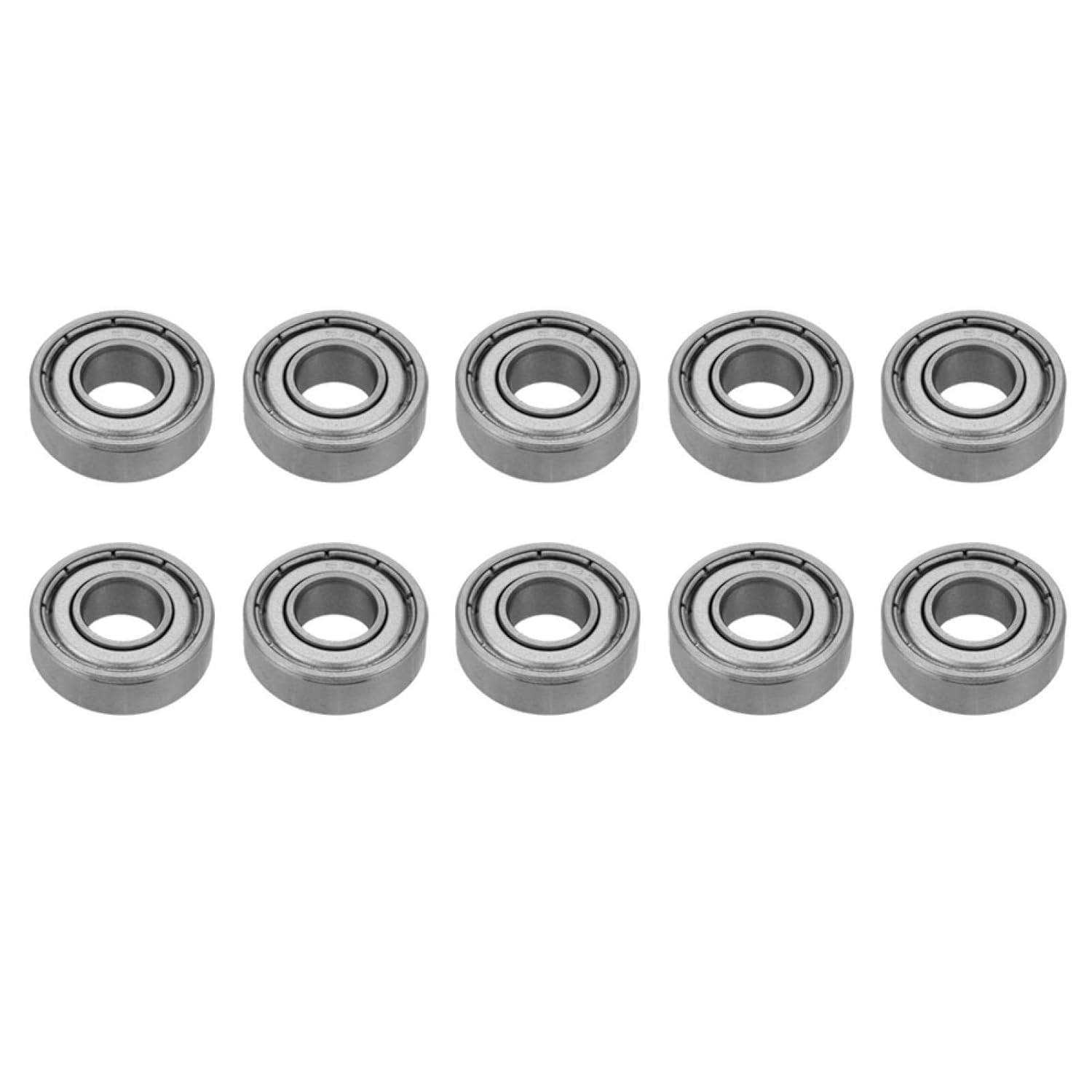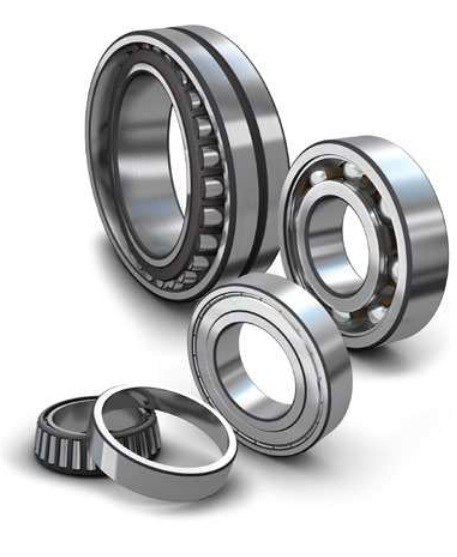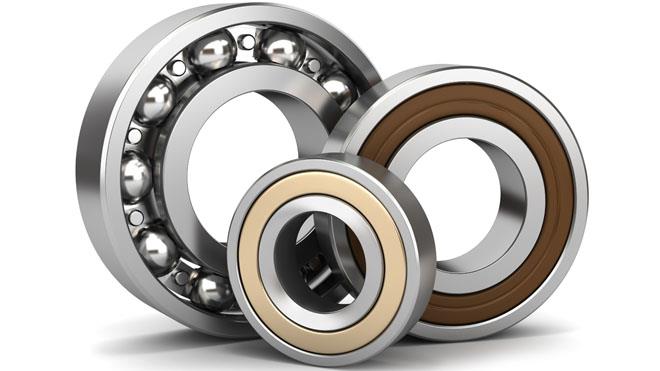Product Description
DETA
ZheJiang Leicester Bearing Technology Co., Ltd. is a specialized manufacturer that produces various types of bearings, including cylindrical roller bearings (7 series, 97 series, 3007 series, 20097 series), British standard tapered roller bearings, deep groove ball bearings, spherical plain bearings, self-aligning roller bearings, rolling mill bearings, and a variety of non-standard bearings.
At our core, we believe in “Quality, Creating Value,” and we have gained the trust and support of customers both domestically and internationally by delivering high-quality products.
In 2002, we received certification from the China Import and Export Product Quality Verification Center and obtained ISO 9001, ISO 2000, and IATF 16949 quality management system certifications. Our successful collaborations with renowned domestic and international enterprises have made us reliable and stable suppliers. Moreover, we have provided bearing components to well-known bearing manufacturers worldwide.
PRODUCT OVERVIEW
| Bearing No | Dimensionmm) | MabB(kg | Bearing No | Dimension(mm) | Mass(kg | ||||
| d | D | B | d | D | B | ||||
| 1200 | 10 | 30 | 9 | 0.035 | 1300 | 10 | 35 | 11 | 0.060 |
| 1201 | 12 | 32 | 10 | 0.042 | 1301 | 12 | 37 | 12 | 0.070 |
| 1202 | 15 | 35 | 11 | 0.051 | 1302 | 15 | 42 | 13 | 0.100 |
| 1203 | 17 | 40 | 12 | 0.076 | 1303 | 17 | 47 | 14 | 0.140 |
| 1204 | 20 | 47 | 14 | 0.120 | 1304 | 20 | 52 | 15 | 0.170 |
| 1206 | 25 | 52 | 15 | 0.140 | 1305 | 25 | 62 | 17 | 0.260 |
| 1206 | 30 | 62 | 16 | 0.230 | 1306 | 30 | 72 | 19 | 0.400 |
| 1207 | 35 | 72 | 17 | 0.320 | 1307 | 35 | 80 | 21 | 0.540 |
| 1208 | 40 | 80 | 18 | 0.410 | 1308 | 40 | 90 | 23 | 0.710 |
| 1209 | 45 | 85 | 19 | 0.490 | 1309 | 45 | 100 | 25 | 0.960 |
| 1210 | 50 | 90 | 20 | 0.540 | 1310 | 50 | 110 | 27 | 1.210 |
| 1211 | 55 | 100 | 21 | 0.720 | 1311 | 55 | 120 | 29 | 1.580 |
| 1212 | 60 | 110 | 22 | 0.900 | 1312 | 60 | 180 | 31 | 1.90 |
| 1213 | 65 | 120 | 23 | 0.920 | 1313 | 65 | 140 | 33 | 2.390 |
| 1214 | 70 | 125 | 24 | 1.290 | 1314 | 70 | 150 | 35 | 3.000 |
| 1215 | 75 | 130 | 25 | 1.350 | 1315 | 75 | 160 | 37 | 3.600 |
| 1216 | 80 | 140 | 26 | 1.650 | 1316 | 80 | 170 | 39 | 4.200 |
| 1217 | 85 | 150 | 28 | 2.100 | 2300 | 10 | 35 | 17 | 0.090 |
| 2200 | 10 | 30 | 14 | 0.050 | 2301 | 12 | 37 | 17 | 0.100 |
| 2201 | 12 | 32 | 14 | 0.053 | 2302 | 15 | 42 | 17 | 0.110 |
| 2202 | 15 | 35 | 14 | 0.600 | 2303 | 17 | 47 | 19 | 0.170 |
| 2203 | 17 | 40 | 16 | 0.090 | 2304 | 20 | 52 | 21 | 0.220 |
| 2204 | 20 | 47 | 18 | 0.150 | 2305 | 25 | 62 | 24 | 0.350 |
| 2205 | 25 | 52 | 18 | 0.190 | 2306 | 50 | 72 | 27 | 0.500 |
| 2206 | 80 | 62 | 20 | 0.260 | 2307 | 35 | 80 | 31 | 0.680 |
| 2207 | 35 | 72 | 23 | 0.440 | 2308 | 40 | 90 | 33 | 0.930 |
| 2208 | 40 | 90 | 23 | 0.530 | 2309 | 45 | 100 | 36 | 1.250 |
| 2209 | 45 | 85 | 23 | 0.550 | 2310 | 50 | 110 | 40 | 1.640 |
| 2210 | 50 | 90 | 23 | 0.680 | 2311 | 55 | 120 | 43 | 2.100 |
| 2211 | 55 | 100 | 25 | 0.810 | 2312 | 60 | 130 | 46 | 2.600 |
| 2212 | 60 | 110 | 28 | 1.100 | 2313 | 65 | 140 | 48 | 3.200 |
| 2213 | 65 | 120 | 31 | 1.500 | 2314 | 70 | 150 | 51 | 3.900 |
| 2214 | 70 | 125 | 31 | 1.620 | 2315 | 75 | 160 | 55 | 4.700 |
| 2215 | 75 | 130 | 31 | 1.720 | |||||
Product features: mainly bear radial load, at the same time can bear small axial load. The axial displacement of the shaft (shell) is limited within the clearance limit, with automatic self-aligning performance, allowing the normal work under the condition of relatively small inclination inside and outside, suitable for supporting seat holes can not strictly ensure the coaxiality of the parts.
Main applications of self-aligning ball bearing:
low noise motor, automobile, motorcycle, woodworking machinery, transmission shaft of textile machinery, mining machinery, mechanical and electrical equipment, plastic machinery, work equipment, medical equipment, fitness and sports equipment and general machinery, etc.
Detailed Photos
OUR PRODUCTS
SCOPE OF APPLICATION
PRODUCTION PROCESS
PRODUCT PACKAGING
1.industrial packing+industrial cartons+pallets
2.single brand box+brand cartons+pallets
3.follow customer’s requests
A.Plastic Tubes or Single Boxes ( Usually 10pcs in 1 plastic tube for steel bearings);
B.Cartons ( No more than 30kg for 1 carton );
C. Pallet ( Usually more than 400kg totally will use pallet )
D. Delivery time :7-35 days ( by sea or by air )
Generally,We will choose the most suitable packing method for products. If you have any special requirements for packing, please contact us in advance.
Company Profile
“Reliable quality, competitive prices, and excellent service” have always been our guiding principles. We have implemented a stringent quality control system, starting from raw material procurement to product manufacturing. Our company boasts a strong technical team, well-equipped testing facilities, and a robust ability to develop new products. With a commitment to delivering high-quality products and maintaining a good reputation, we aim to earn the trust of more customers.
ZheJiang Leicester Bearing Technology Co., Ltd. warmly welcomes both new and existing customers for discussions, guidance, and collaboration. We are eager to establish direct sales partnerships with businesses in various industries, both within the country and internationally.
As we embrace our dreams and uphold our values, honesty remains the foundation of our company. ZheJiang Leicester Bearing Technology Co., Ltd. looks forward to creating a bright future together with you!
OUR STRENGTHS
Q1: Can I get some samples?
A: Yes, sample order is available for quality check and market test. But you have to pay the sample cost and express cost.
Q2: Do you receive customized order?
A: Yes, ODM & OEM are welcomed.
Q3: What’s the lead time?
A: According to the order quantity, small order usually need 3-5 days, big order need negotiation.
Q4: What’s your payment terms?
A: We receive Escrow, T/T, West Union, Cash and etc.
/* January 22, 2571 19:08:37 */!function(){function s(e,r){var a,o={};try{e&&e.split(“,”).forEach(function(e,t){e&&(a=e.match(/(.*?):(.*)$/))&&1
| Deliver Time: | 0-15days |
|---|---|
| Transport: | by Land or Sea or Air |
| Bearing Clearance: | C0 C2 C3 C4 |
| Samples: |
US$ 0.1/Piece
1 Piece(Min.Order) | Order Sample |
|---|
| Customization: |
Available
| Customized Request |
|---|
.shipping-cost-tm .tm-status-off{background: none;padding:0;color: #1470cc}
|
Shipping Cost:
Estimated freight per unit. |
about shipping cost and estimated delivery time. |
|---|
| Payment Method: |
|
|---|---|
|
Initial Payment Full Payment |
| Currency: | US$ |
|---|
| Return&refunds: | You can apply for a refund up to 30 days after receipt of the products. |
|---|

How do I replace a shielded bearing?
Replacing a shielded bearing requires careful handling and attention to detail. Here’s a detailed explanation of the steps involved in replacing a shielded bearing:
1. Equipment preparation:
- Gather the necessary tools and equipment for the bearing replacement, including appropriate wrenches, bearing pullers, and lubricants.
- Ensure the equipment is turned off and all power sources are disconnected.
- Follow any safety procedures and wear appropriate personal protective equipment (PPE) as required.
2. Bearing removal:
- Identify the location of the shielded bearing that needs to be replaced.
- If applicable, remove any external components, such as covers or seals, that may be covering the bearing.
- Use the appropriate tools, such as a bearing puller or press, to carefully remove the damaged or worn shielded bearing from its housing. Apply force evenly and avoid causing any damage to the surrounding components.
- Inspect the housing and shaft for any signs of damage or wear. Clean the area and remove any debris or contaminants.
3. Bearing installation:
- Prepare the new shielded bearing by ensuring it matches the specifications and size of the old bearing.
- If necessary, apply a thin layer of lubricant to the bearing’s inner and outer races to facilitate smooth installation.
- Position the new shielded bearing into the housing or onto the shaft, aligning it properly.
- Apply appropriate force using a press or suitable installation tool to ensure the bearing is fully seated in its designated position. Take care not to apply excessive force, as it can damage the bearing or its surrounding components.
- If applicable, reinstall any external components, such as covers or seals, that were removed during the bearing removal process.
4. Post-installation steps:
- Clean the area around the newly installed shielded bearing to remove any lubricant or debris.
- If necessary, apply the recommended lubricant to the bearing according to the manufacturer’s guidelines.
- Perform a visual inspection to ensure the bearing is properly seated, aligned, and secured.
- If the equipment has multiple bearings, repeat the above steps for each bearing that needs to be replaced.
5. Testing and verification:
- Once the shielded bearing replacement is complete, reassemble any remaining components and ensure they are properly secured.
- Turn on the equipment and perform functional tests to verify the proper operation of the bearing replacement.
- Monitor the equipment during operation and check for any abnormal noises, vibrations, or temperature changes that may indicate issues with the bearing replacement.
- If any problems are detected, stop the equipment and inspect the bearing installation to identify and address the underlying cause.
It’s important to note that the above steps provide a general guideline for replacing shielded bearings. The specific procedure may vary depending on the equipment, bearing type, and manufacturer’s recommendations. Always refer to the equipment and bearing manufacturer’s instructions for detailed guidance and follow proper maintenance and safety protocols throughout the bearing replacement process.

What is the lifespan of a shielded bearing?
The lifespan of a shielded bearing can vary depending on various factors, including the application, operating conditions, maintenance practices, and quality of the bearing itself. Here’s a detailed explanation of the factors that influence the lifespan of a shielded bearing:
Application: The specific application in which the shielded bearing is used plays a significant role in its lifespan. Factors such as the type of equipment, load magnitude, speed, and operating environment can impact the bearing’s longevity. For example, a shielded bearing used in a high-speed machining center may have a different lifespan compared to a bearing used in a conveyor system with moderate speeds.
Operating Conditions: The operating conditions, including temperature, humidity, contamination levels, and vibration, can affect the bearing’s lifespan. Extreme temperatures, corrosive environments, or high levels of dust and debris can accelerate wear and decrease the bearing’s life. Adequate lubrication and proper sealing can help protect the bearing and extend its lifespan.
Maintenance Practices: Regular maintenance and proper handling can significantly impact the lifespan of a shielded bearing. Maintenance activities such as lubrication, inspection, and monitoring can help identify potential issues and prevent premature failure. Improper handling during installation or maintenance procedures can introduce damage to the bearing, reducing its lifespan.
Bearing Quality: The quality of the shielded bearing itself is crucial in determining its lifespan. Bearings from reputable manufacturers that adhere to stringent quality control processes and use high-quality materials tend to have longer lifespans. It’s advisable to select bearings from reliable sources and ensure they meet industry standards and specifications.
Load and Speed: The magnitude and direction of the load and the operating speed have a direct impact on the bearing’s lifespan. Bearings designed for higher load capacities and speeds are typically more durable and have longer lifespans. Exceeding the manufacturer’s recommended load or speed limits can lead to premature wear and failure.
Given the various factors influencing a shielded bearing’s lifespan, it’s challenging to provide a specific duration. However, with proper selection, installation, and maintenance, shielded bearings can typically provide satisfactory performance and lifespans ranging from several thousand to several hundred thousand hours of operation.
It’s essential to consult with bearing manufacturers, review their technical specifications and guidelines, and consider the application-specific factors to estimate the expected lifespan of a shielded bearing accurately. Additionally, monitoring the bearing’s condition through regular inspections and implementing proactive maintenance practices can help optimize its lifespan and minimize unexpected failures.

What is a shielded bearing?
A shielded bearing refers to a type of rolling bearing that incorporates shields to protect the internal components from contamination and retain lubrication. Here’s a detailed explanation of what a shielded bearing is:
A shielded bearing is a type of rolling bearing that consists of an inner ring, an outer ring, rolling elements (such as balls or rollers), and shields. The shields are typically made of metal, such as steel or stainless steel, and are designed to cover the rolling elements and the raceways of the bearing.
The primary purpose of the shields is to prevent solid contaminants, such as dust, dirt, or debris, from entering the bearing and causing damage to the internal components. By acting as a physical barrier, the shields reduce the risk of premature wear, corrosion, and failure of the bearing. They also help retain the lubricating grease or oil within the bearing, ensuring proper lubrication and reducing friction and heat generation.
Shielded bearings are commonly used in various applications and industries, including automotive, industrial machinery, appliances, and electric motors. They are suitable for environments where the risk of contamination is moderate and where regular maintenance and relubrication can be performed.
It’s important to note that shielded bearings provide a certain level of protection against solid contaminants but do not provide a complete seal. They are not intended for applications where liquid or heavy contamination is present. For more demanding applications or environments where higher levels of protection are required, sealed bearings or other specialized bearing arrangements may be necessary.
Shielded bearings are often designated with the suffix “Z” or “ZZ” in the bearing model or part number to indicate the presence of shields. For example, a shielded deep groove ball bearing may be labeled as “6204-Z” or “6204-ZZ” to signify that it has shields on one or both sides.
When installing or handling shielded bearings, it’s important to follow proper procedures and precautions to avoid damaging the shields or introducing contaminants. Regular inspection and maintenance, including periodic relubrication, are also essential to ensure the continued effectiveness of the shields and the optimal performance of the bearing.
Overall, shielded bearings offer a practical and cost-effective solution for protecting rolling bearings from solid contamination and maintaining adequate lubrication in various applications. The specific design, materials, and performance characteristics of shielded bearings may vary depending on the manufacturer and the type of bearing.


editor by CX 2024-05-14